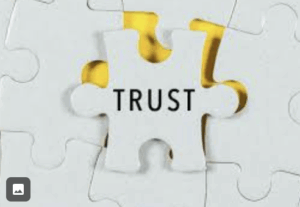Communication is the foundation of every healthy relationship. Whether you’re in a romantic relationship, a friendship, or navigating family dynamics, how you communicate can make or break the connection. In relationships, communication involves more than just exchanging words—it’s about understanding and being understood, expressing emotions, and resolving conflicts. In this blog post, we’ll explore the different types of communication in relationships, how each type impacts the dynamic between partners, and tips to improve your communication skills for a stronger, healthier connection.
1. Verbal Communication
Verbal communication involves using spoken words to convey thoughts, feelings, and information. In relationships, verbal communication plays a crucial role in sharing emotions, discussing issues, and expressing needs.
How Verbal Communication Impacts Relationships:
- Expressing Feelings: Openly discussing how you feel—whether it’s joy, frustration, or sadness—helps foster intimacy and trust. Being able to verbalize your emotions helps your partner understand you better and can prevent misunderstandings.
- Problem-Solving: Healthy verbal communication is essential for resolving conflicts. It allows partners to express their concerns, listen to each other’s perspectives, and work together to find solutions.
Tips to Improve Verbal Communication:
- Be Honest and Direct: Say what you mean, but be considerate of how you say it. Being clear about your needs and feelings helps prevent confusion and resentment.
- Use “I” Statements: When discussing difficult topics, focus on your feelings by using “I” statements (e.g., “I feel hurt when…”) instead of blaming or criticizing your partner. This reduces defensiveness and encourages open dialogue.
- Active Listening: Listening is just as important as speaking. Practice active listening by focusing on your partner’s words without interrupting, showing empathy, and asking questions to clarify.
2. Non-Verbal Communication
Non-verbal communication includes facial expressions, gestures, body language, eye contact, and tone of voice. Often, non-verbal cues communicate emotions even more powerfully than words, and they play a significant role in how messages are interpreted.
How Non-Verbal Communication Impacts Relationships:
- Building Trust and Intimacy: Simple non-verbal cues like holding hands, making eye contact, or giving a warm hug can strengthen the emotional connection between partners. These small gestures can make your partner feel loved and secure.
- Reinforcing or Contradicting Verbal Messages: Non-verbal communication can either reinforce or undermine what is being said. For example, saying “I’m fine” while crossing your arms or avoiding eye contact sends a mixed message, leading to confusion and frustration.
Tips to Improve Non-Verbal Communication:
- Be Mindful of Body Language: Pay attention to your posture, gestures, and facial expressions during conversations. Open body language (such as uncrossed arms and facing your partner) signals that you are receptive and engaged.
- Use Physical Touch: Physical affection—whether a hug, a pat on the back, or holding hands—can convey love, comfort, and support without needing words.
- Maintain Eye Contact: Eye contact shows your partner that you are focused on them and listening intently. It can also help convey sincerity and trustworthiness.
3. Emotional Communication
Emotional communication refers to how partners share their feelings, both positive and negative, with each other. This type of communication is key to emotional intimacy and understanding in relationships.
How Emotional Communication Impacts Relationships:
- Deepening Connection: Sharing your emotions allows you to bond on a deeper level. Expressing vulnerability, joy, sadness, or frustration helps your partner understand you and respond with empathy.
- Reducing Misunderstandings: Emotional communication is important for addressing emotional needs and concerns. When you and your partner are honest about your feelings, it prevents misunderstandings and unresolved tensions from growing into bigger issues.
Tips to Improve Emotional Communication:
- Create a Safe Space: Make your relationship a safe space where both partners feel comfortable sharing their emotions without fear of judgment. This helps foster trust and encourages openness.
- Validate Feelings: Even if you don’t agree with your partner’s emotions, validate their feelings by acknowledging their experiences (e.g., “I can see that you’re upset, and I understand why you feel that way”).
- Be Vulnerable: Emotional communication requires vulnerability. Don’t be afraid to share your fears, hopes, or insecurities with your partner, as this deepens emotional intimacy.
4. Written Communication
In today’s digital age, written communication—through text messages, emails, and social media—has become a common way to connect with others. While not as rich as face-to-face or verbal communication, written messages still play an important role in maintaining relationships.
How Written Communication Impacts Relationships:
- Maintaining Connection: For couples or family members who live apart, written communication helps maintain connection across distances. A thoughtful message, whether it’s a love note or a simple check-in, can make someone feel valued and cared for.
- Clarity in Difficult Conversations: Some people find it easier to express complex emotions or difficult topics through writing. Written communication can provide the time and space needed to think through your message before responding.
Tips to Improve Written Communication:
- Be Clear and Thoughtful: Written messages lack the non-verbal cues of face-to-face conversations, so it’s important to choose your words carefully to avoid misunderstandings. Aim for clarity, and take the time to craft a message that accurately reflects your thoughts.
- Avoid Using Text for Major Discussions: While texts are convenient, major or emotionally charged conversations are best saved for in-person discussions. Complex issues can be misinterpreted over text, leading to unnecessary conflict.
- Express Appreciation: Don’t hesitate to send kind, encouraging, or appreciative messages, even when things are going well. A quick “I love you” or “I’m thinking of you” text can go a long way in making your partner feel special.
5. Visual Communication
Visual communication involves using images, gestures, or other visual aids to express thoughts and feelings. This form of communication can be particularly helpful for couples who enjoy expressing themselves creatively or visually.
How Visual Communication Impacts Relationships:
- Expressing Emotions Creatively: Visual communication can take many forms, from sending a meaningful photograph to sharing a drawing or creating something special together. These visual expressions can deepen emotional connection by communicating in unique and creative ways.
- Enhancing Conversations: Visual aids such as diagrams, charts, or even doodles can help clarify complex ideas or plans during conversations. They help bring clarity and shared understanding to important discussions.
Tips to Improve Visual Communication:
- Use Creative Expression: If you or your partner enjoy art, photography, or other creative outlets, find ways to use these activities to express feelings or strengthen your bond.
- Incorporate Visuals into Discussions: Sometimes, using visual aids to express ideas or plans can help clarify your message. Visuals can also help you feel more connected if you’re engaging in long-distance communication.
How to Improve Communication in Relationships
No matter which type of communication you use, improving your skills can help strengthen your relationship. Here are some general tips to enhance communication with your partner:
- Be Open and Honest: Transparency builds trust. Be honest about your feelings, needs, and concerns, even when it’s uncomfortable. A healthy relationship is built on open communication.
- Show Empathy: Try to see things from your partner’s perspective, especially during disagreements. Empathy helps bridge gaps and fosters understanding.
- Practice Patience: Good communication takes time and effort. Be patient with your partner, especially during difficult conversations.
- Set Aside Time for Meaningful Conversations: Regularly set aside uninterrupted time to connect with your partner, whether it’s through talking, listening, or simply being together.
Conclusion
Effective communication is the cornerstone of any strong, healthy relationship. Understanding the different types of communication—verbal, non-verbal, emotional, written, and visual—can help you better express yourself and strengthen your connection with your partner. By improving your communication skills in each area, you’ll be better equipped to navigate conflicts, deepen intimacy, and build a lasting, supportive relationship.
At Kingston & Co Counseling, we specialize in helping couples improve their communication and strengthen their relationships. If you’re struggling with communication in your relationship, we’re here to help. Please contact us to learn more about our couples therapy services or to schedule an appointment. We’re committed to helping you build a healthier, happier relationship.







